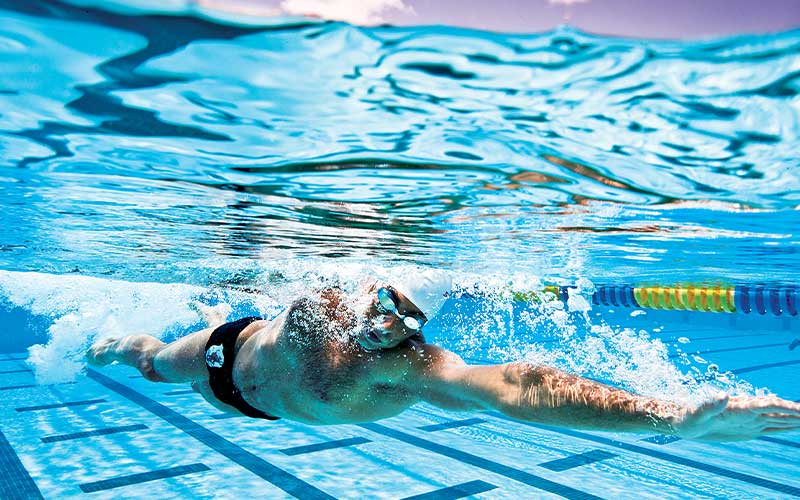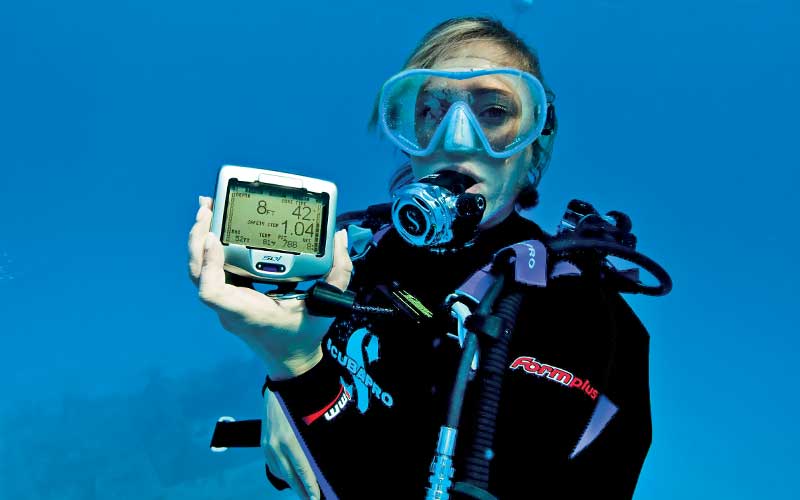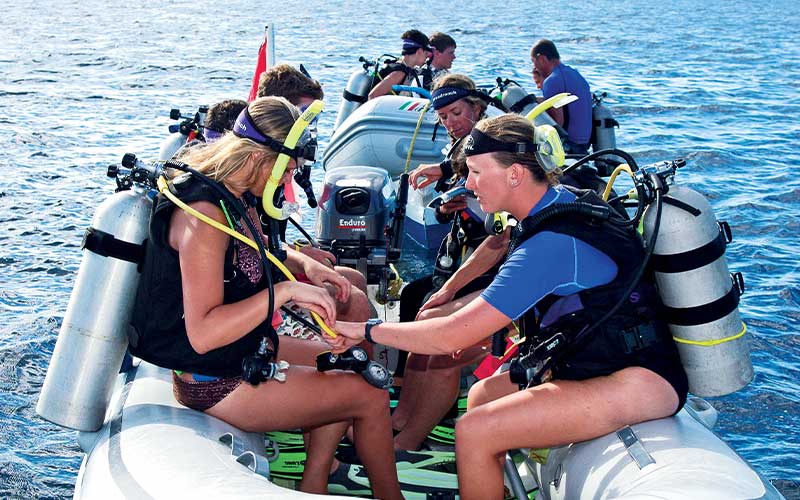There is a certain wanderlust among divers. Like the seafaring explorers of old, many in the diving community travel farther, dive deeper and consistently search the horizon and plumb the depths for new adventure. As a group, we are continually seeking ways to safely spend more time in the water. Since diving became a recognized endeavor for the general public, training organizations have worked diligently to provide techniques and procedures that facilitate safety and enjoyment.
Divers Alert Network® (DAN®) was founded 30 years ago with dive safety as its core mission. Over time, DAN’s reach has expanded to include research, training and a robust medical call center for divers. DAN’s services include medical referrals, consultation, evacuation assistance and repatriation. Over the course of our history, we have learned many lessons about dive safety and accident prevention.
These lessons are based on our collective experience and are the synthesis of years of accident management. With time, we have noted recurring issues associated with poor outcomes, many of which were avoidable. The majority of accidents that could have been avoided are the result of multiple factors that come together in a domino effect. Our goal is to support safe practices; and the more you build safety into your travel plans and diving activities, the happier memories you will have of successful trips and the more trouble you will avoid. Let’s take a look at some dive safety basics that, while important every time you dive, are especially important when you’re away from home.
Take Care of Yourself
A critical aspect of dive safety is personal readiness. In this context, readiness encompasses health, physical conditioning, proper skills and equipment preparation. The primary goal here is to ensure that your skills, equipment and health status are commensurate with the type of diving you plan to do and the environmental conditions you expect. Ideally, you should be fit enough to perform comfortably in the anticipated conditions, and your fitness level should provide you with a reserve in case of an emergency. Fatigue and exhaustion may lead to poor decision making and are common triggers of dive accidents. Optimal preparation for diving should include strength and cardiovascular training at least three times a week throughout the year and fin-swimming training before the dive season.

Health problems may cause accidents directly or indirectly by compromising physical fitness. DAN fields thousands of informational calls and emails every year and has an extensive referral network of dive-medicine trained physicians to help you. If you have concerns, or if your health status has changed since you last had a dive physical, please call +1-919-684-2948 or send us an email through our website, www.DAN.org, for a referral.
An easy way to decrease the risk of accidents is by keeping your gear in working order. Regulators and buoyancy compensators must be serviced annually. For those diving with rebreathers and other technical equipment, consult your manufacturer’s recommendations and have the gear evaluated regularly by a professional, especially in the event of any malfunction. For those diving in cold water, ensure your drysuits are functioning correctly — that seals are intact and valves have been regularly maintained and work perfectly.
When planning a trip, consider how your skills, experience and fitness match up to environmental conditions and requirements of the dive destination. Reassess your risks before each dive, taking into consideration the actual conditions. Rough water, poor visibility, currents and unfamiliar surroundings can present significant challenges to divers. When combined with gear troubles and poor physical fitness, these factors really set up divers for failure, which in the diving environment may be fatal.
When at a dive site for the first time, seek the assistance of local professionals in assessing dive conditions and risks. In addition, dive professionals may help you assess your own abilities and limitations and provide the training necessary to ensure your skills match the environment.

Safer Diving Practices
Once at the dive site, what can you do to enhance your safety, reduce your risk of decompression sickness (DCS) and further stack the deck in your favor? While the overall risk of DCS is very low, it still occurs and is worth avoiding. Some simple steps you can employ on your next trip may make a difference.
For divers, DCS results from the formation of nitrogen (or other inert gas) bubbles within tissues and blood vessels secondary to a reduction in ambient pressure. Gas dissolved into liquid (bodily tissues and blood) at depth may come out of solution and form bubbles either during or after ascent. Bubbles can cause tissue inflammation and compromise blood flow. The amount of dissolved nitrogen is proportional to the depth and duration of a dive, so decreasing these will reduce the risk of DCS. Longer surface intervals, slow ascents and prolonging the time spent at shallow depths will promote off-gassing — the safe elimination of accumulated inert gas.

Enriched air nitrox (EAN) has less nitrogen than air, so its use by divers results in less nitrogen absorption than similar profiles on air. It should be noted, however, that the safety margin enjoyed with nitrox is achieved only by diving air tables or equivalent computer settings. When divers set their computers for nitrox with the intention of extending bottom time, this safety margin is lost. The use of nitrox comes with unique safety concerns such as oxygen toxicity and requires proper training.
An additional factor that may impact the incidence of DCS is poor hydration. Hydration has gained attention for its potential role in reducing DCS risk and for its adjunctive use in medical management (use of IV fluids along with oxygen or hyperbaric oxygen therapy). While hydration alone does not make up for or counteract provocative dive profiles, suboptimal hydration status — often associated with alcohol intake and hot climates — may be associated with increased DCS risk.
Mental Preparation
Mental preparation is critical for safe diving. Fear, apprehension, fatigue and severe anxiety can compromise decision-making abilities. If you aren’t feeling up to diving or if the conditions or goal of the dive frighten you, don’t go.
Dive Planning

With the widespread use of dive computers, dive planning has largely become a lost art. While these incredible little machines do a lot to keep us informed underwater, it is important to remember that the limits they impose are based on mathematical algorithms that have not been validated by experimental research. In addition, each of us will have a varying degree of susceptibility to DCS throughout our lifetimes and from one dive to the next, none of which is accounted for by standard tables or computers. Therefore, the no-decompression limits (and decompression instructions in technical-diving computers) should be viewed as guidelines and not representative of absolute or established boundaries that are “safe” so long as they aren’t violated.
Have a Backup Plan
You’ve modified your dive practices and added layers of safety, but you want additional preparation and security because you know things can still go wrong.
In addition to personal health, the prepared diver should consider the financial impact of emergent care and evacuation. Dive accident insurance provides financial safety and helps with the high cost of evacuation, transportation and medical care. As with any insurance, know what your policy covers before you leave. Don’t rely on folklore, your dive shop or your instructor. Read the policy, and understand the true nature of your coverage and what exclusions exist. Before buying dive accident or trip insurance, consider where you will be traveling and what a worst-case scenario might look like. These policies are relatively inexpensive when compared to the trip’s cost and the cost of evacuation and medical treatment. If you have questions about what your dive accident or trip insurance policy covers, call and ask.
Another area of pretrip preparation that warrants attention is your medical needs. Be sure to bring enough medication with you when you travel to last the entire trip plus a few days after you return home. If the list of medications you take is long or complex, consider carrying a written list in the event of unexpected need. If you have a complicated health history, discuss your trip with your doctor, and take a detailed health history with you in case emergent medical intervention is required. Travel health risks vary from region to region; up-to-date information may be obtained from the Centers for Disease Control and Prevention’s website or the Worldcue® Planner Travel Intelligence® Resource available to DAN Members at www.DAN.org/worldcue.
Health status requirements can vary greatly among different resorts, charter operators and dive shops. We recommend calling well ahead of time to see what they require, whether they have forms you can fill out and what sort of documentation they will use to ensure you meet their standards for medical fitness to dive. By addressing these issues early and proactively, you will encounter fewer roadblocks and unexpected restrictions.
An aspect of emergency preparedness often forgotten is filing a trip plan with family or friends. Trip plans should include contact numbers, medical history, medication lists, allergies and flight plans. Such information can prove vital in the event of poor international telephone connections or spotty satellite phone coverage.
Emergency Action Plan
You’ve completed your pretrip planning and will make adjustments to your dive practices; now what?
Traveling to remote destinations can be wonderful, but remember that if it took a plane, a train, a boat and a donkey to get you there, help will likely require the same route to reach you. This is a sobering reality for those visiting exotic destinations, but it bears consideration. As a rule of thumb, the further you travel from home or medical services, the more precautions you should employ to stack the deck in your favor. This is why having redundant medical supplies, reliable communication equipment, multiple contact options and medical training is so important. Knowing that the best scenario might be a one- to two-day wait before you can be evacuated encourages good preparation. If you’re traveling with a company, consider asking focused questions to determine how prepared they are for such contingencies and what plans they have in place for evacuation.

This boils down to having an emergency action plan — a guide for what to do when bad things happen. A substantial part of many people’s plans is to call DAN. This is an important step, but it’s only one part. DAN is here 24/7/365 to field calls, provide medical information, facilitate referrals and coordinate evacuations, but we can’t provide care over the phone or on the boat, island or lake. This is where your contingency planning and medical training (or that of your dive/travel operation) comes into play.
An integral part of a good trip is a safe return with wonderful memories. The more personal responsibility you take for your own safety and well-being, the more likely it is that you will enjoy trouble-free adventures. If trouble does occur, adequate preparation, planning and a thoughtful approach will boost your confidence and minimize the extent of complications and injuries.
© Alert Diver — Q3 Summer 2011